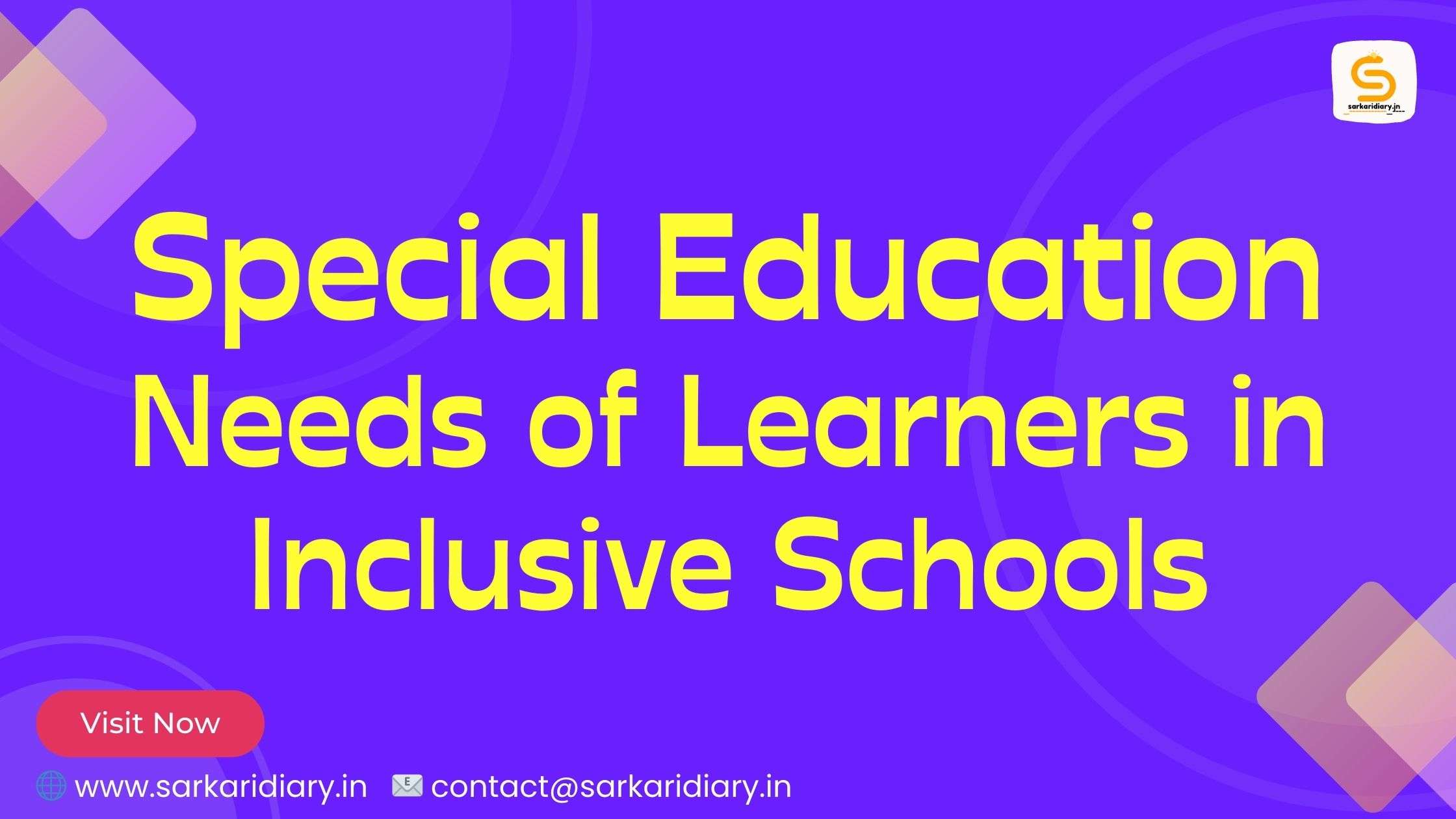Today, we’re going to dive into the world of special education needs in inclusive schools. Inclusive education is a philosophy that aims to provide equal opportunities for all students, regardless of their abilities, by creating supportive and diverse learning environments. So, let’s explore the unique challenges and strategies involved in meeting the special education needs of students in inclusive schools.
Understanding Special Education Needs
Before we delve deeper, let’s clarify what we mean by special education needs. These needs refer to the individual requirements of students who may have disabilities, specific learning difficulties, or other exceptionalities that impact their educational experience. Special education needs can encompass various areas, such as physical, sensory, cognitive, emotional, and behavioral challenges.
Creating Inclusive Classroom Environments
Inclusive schools strive to create a welcoming and accessible learning environment for all students. To promote inclusivity, teachers must embrace a student-centered approach that recognizes and accommodates diverse learning needs. Adapting the physical environment, incorporating assistive technologies, and providing visual aids are just a few strategies that can enhance inclusivity in classrooms.
Individualized Education Plans (IEPs)
One essential tool for addressing special education needs is the Individualized Education Plan (IEP). An IEP is a personalized plan developed for students with specific learning requirements. It outlines the student’s learning goals, accommodations, and modifications, enabling teachers to provide tailored support and track progress effectively. Collaboration between teachers, parents, and specialists is crucial in developing and implementing successful IEPs.
Differentiated Instruction
Inclusive classrooms often employ differentiated instruction, which involves tailoring teaching methods to meet the diverse needs of students. Through differentiation, educators can adapt lesson plans, materials, and assessments to ensure that each student’s unique requirements are met. This approach fosters a supportive learning environment where all students can actively participate and thrive.
Visit Sarkari Diary Notes Section
Also Read: [catlist name=bed-deled]
Assistive Technologies and Supportive Resources
Advancements in technology have revolutionized the way educators support students with special education needs. Assistive technologies, such as text-to-speech software, screen readers, and speech recognition tools, have proven invaluable in leveling the playing field for learners with diverse abilities. Additionally, schools can leverage supportive resources like sensory rooms, learning pods, and therapeutic interventions to cater to specific requirements.
Building an Inclusive School Community
Inclusive education extends beyond the classroom walls. It encompasses creating a positive and accepting school culture that celebrates diversity and fosters empathy and understanding among students. Schools can achieve this by implementing peer support programs, organizing inclusive events, and promoting collaborative projects that encourage students to work together regardless of their abilities.
Teacher Professional Development and Support
Supporting students with special education needs requires ongoing professional development and support for educators. Teachers benefit from specialized training programs that equip them with strategies for inclusive teaching, behavior management techniques, and individualized support approaches. Collaboration with special education professionals and sharing best practices within the school community can also enhance teachers’ ability to address diverse needs effectively.
Providing Emotional and Behavioral Support
It’s essential to remember that special education needs extend beyond academics. Many students require emotional and behavioral support to thrive in an inclusive setting. Schools can establish counseling services, mentorship programs, and social-emotional learning initiatives to provide the necessary guidance and assistance. By addressing the emotional well-being of students, educators can create a safe and nurturing environment for all learners.
Visit Sarkari Diary Notes Section
Also Read: [catlist name=bed-deled]
Conclusion: Embracing Inclusivity
In conclusion, inclusive schools strive to provide equal opportunities and support to students with special education needs. By creating inclusive classroom environments, individualizing education plans, employing differentiated instruction, and leveraging assistive technologies, schools can meet the unique requirements of diverse learners. Additionally, building an inclusive school community, supporting teachers through professional development, and prioritizing emotional and behavioral support are vital to fostering an environment where every student can flourish.
